Kilchoman is both an exciting new trend in craft whisky, and a fundraising PR stunt on a massive scale. Call me cynical, but I don’t personally appreciate being asked to pay unreal prices – arguably a form of charity in this case – to support the future production of quality whisky. This sentiment may make me unpopular with other whisky writers (who seem to unilaterally sing the praises of the new distillery’s super-young products), but I just don’t think the young peated malt is good enough to command these prices.
The very valid arguments in favor of Kilchoman’s capitalization strategy are that by selling young whisky and high prices, they are supporting the distillation and aging of much better products for everyone to enjoy in the future. In addition, the seasonally-released malts have become collectors’ items and will no doubt grace auction halls for years to come.
Don’t get me wrong. The 3 year-old malt I got to try at K&L a few weeks ago showed massive promise and a very clear, crisp, and tasty style. There’s no doubt in my mind that this whisky will be explosive when it reaches 8 or 10 years old. But $60 a bottle? For that I can get a complex, established, mature Islay like Lagavulin 16 (well, almost) or Laphroaig Quater-Cask. Maybe I’m lacking an altruistic gene, but there’s something about the overt (if well-intentioned) money-grab that leaves a bad taste in my mouth… and it isn’t peat.
On the upside for those willing to shell out the dough (or wait like the rest of us), we’re looking at a craft presentation (46% ABV, unchilfiltered, and no color added) peated malt from a distillery that grows AND malts its own barley. With responsible farming, expert whiskymaking, careful maturation, and an ongoing worldwide craze for anything Islay, I’d say that Kilchoman has a bright future.
The Spring 2011 release that I tried is a vatting of 3 and 4 year-old whisky aged in first-fill bourbon casks, plus a partial finishing (only 5 weeks) in oloroso sherry butts (making it “officially” 3 years old). Peated to a whopping 50 PPM.
Nose: Blast of salty peat, smoked pork and lemongrass. Not heavy on the smoke, but more earthy and bright and slightly vegetal. Pleasant and bracing.
Palate: Light body, but relatively smooth on the tongue. More waves of bright young, vibrant peat. Mossy and dusty. No fruit that I can detect.
Finish: Long, continuing the bright peat, which turns lemony, then herbal lozenge. Not even a touch of bitterness. Very nice.
Overall: This shows a LOT of promise, but it’s only really promise at this point. If this were a finished NAS product, I’d price it around $40 a bottle on the competitive Islay market. As it is, though, it’s more of a showpiece or a collector’s item than a drinkable bottle. At around $60 a bottle, you should only pay this price if you’re a diehard Islay fan, a collector, or consider supporting new distilleries a form of charity. I, for one, will be anxiously awaiting the first 10 year-old official bottling… in 2016.


About The Distillery
Kilchoman is the first new distillery on Islay in 124 years. Construction finished in 2005 and the distillery began producing spirit for an Islay-craving world. Unfortunately as is the case with any Scotch distillery, that whisky won’t be able to compete with its peers until it has aged sufficiently. In order to stay in business, Kilchoman began producing very young “preview” bottlings to attract interest, showcase distillery potential, and raise funds. The first, in 2009, was aged 3 years and 3 months. Producing only 100,000 liters annually, the small distillery is attempting to stick to its “craft” roots – growing barley on its own farm (the upcoming “100% Islay” release will contain whisky made exclusively from this barley), using its own floor maltings, and eschewing chill-filtration and the addition of coloring agents. Kilchoman promises to be one of the best craft single malt Scotches when it reaches a competitive age.


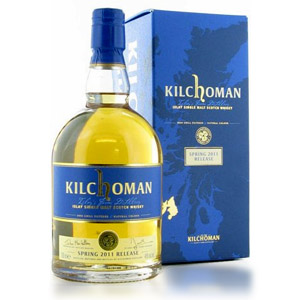
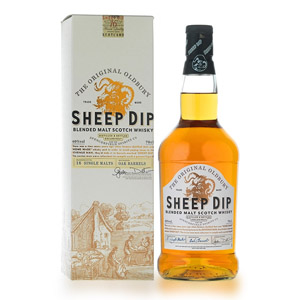
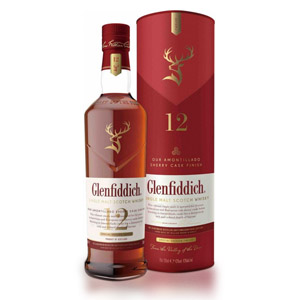

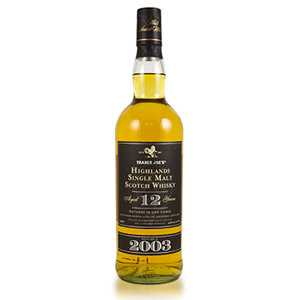
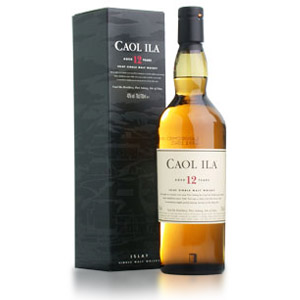
Normally, I find our opinions mesh pretty well. This is one time they do not. I think that Kilchoman is a fantastic whisky at three years old and worth the $60 price tag. According to Anthony Wills they’re going to cease the seasonal releases and start releasing a regular bottling of five year old. Personally, I hope they continue releasing a 3yo bottling.
It could be worse, they could be using a 375mL bottle like Tuthilltown does for their Hudson line.
Also, look at the pricing of Edradour which is a similarly sized distillery.
Yeah, I have to disagree as well. Kilchoman is producing some great whisky. Young, sure, but very good. I thought the 100% Islay was really solid. The nose was – dare I even whisper – Port Ellen-esque. Is it expensive? Yeah, what isn’t these days?
This isn’t about altruism and I feel like this has been a very common thread in the last few weeks in the whiskey blog-o-verse. No one’s forcing anyone to try or buy these whiskies. A market is made up of sellers and buyers – if they put it up for sale and no one bought it, you can bet the strategy would change. But clearly Kilchoman is seeing some success with their strategy, so why wouldn’t they continue it? Meanwhile, nary a peep is to be heard about Abhainn Dearg’s three year old. Yes, there is a definite quality issue and not a marketing issue. Klichoman’s spirit merits its prices. AD as of yet does not.
There’s no obligation to buy Kilchoman or Buffalo Trace experiments or Abhainn Dearg or Kilkerrans (or Roseisles or Ailsa Bays or Daftmills, etc). I don’t understand the statements that people make about pricing as if they’re being forced to buy up every new whisky that hits the market.
You want to talk about money grabs? Look at the never-ending “most expensive whisky” arms race which, in my opinion, Dalmore has taken to ridiculous and idiotic heights. 750 mL of spirit in a one-off bottling probably isn’t worth $30,000.
Difference of opinion aside, Kilchoman definitely shows a lot of promise and one can only hope it continues to age well.
I don’t remember where I saw this so don’t take it as fact; but I was under the impression that Kilchoman’s first release(s) were cheaper, but whisky obsessives gobbled them up so they upped the price. Which, I don’t really have a problem with. But, I’m with you that it’s too steep for me right now. If I ever see a bottle on sale, I might buy it. So, that probably means I will not buy it ;-P
Thanks all, for your comments. I wrote the piece knowing I would be differing in opinion with the majority on this. I agree wholeheartedly that Kilchoman (at least the one I tried) is an excellent product, and shows immense promise.
I suppose the point I was trying to make (and didn’t), is that an upward trend in the prices of single malt (young and old) threatens to further segregate whisky lovers into two camps… those who can afford it, and those who are stuck with mass-produced spirit. I believe that high-quality, accessible whisky has more potential to attract new converts and uplift the industry as a whole than does stratospheric out-of-reach pricing. Already, as has been noted on this blog, US prices of single malts have risen in many areas and (due to a combination of taxes, middle-men, and corporate greed) are simply too high for your average whisky lover to explore his or her passion and remain financially responsible.
In a world where 10 year-old Laphroaig and 12 year-old Balvenie (can be) under $40, I just don’t see why very young Kilchoman should START at $60, no matter how good it is. Just wait until they start doing special releases, finishes, and older expression. Is 18 year-old Kilchoman going to run $200? Who knows, maybe once they get on their feet they’ll prove me wrong.
I hear you, for sure. My cap is somewhere around $60/bottle, except for maybe a once yearly splurge. It makes it tough to explore single malts.
I think Kilchoman is just a special case – they are a very small production and thus very limited, and always will be. They’ll never have the output of the Islay big boys (or the Balvenies or the world) and thus prices will be higher.
As a related curiosity, I’m guessing that Kilchoman is not selling or planning to sell any spirit to blenders. Are there ANY other distilleries in Scotland who produce only for single malt bottlings? It’s just another reason we can expect Kilchoman prices to be higher. But you’re absolutely right, it sucks hard for people like us who can’t afford to get every bottle that looks interesting.
@Ryan My understanding is that in all distilleries, a certain quantity of barrels develop undesirably and are considered “sub par” for bottling as a single-malt (or even too bad for vatting with other, better, barrels for a larger bottling run). This is due to variations in wood, weather, warehouse location, or contaminants that find their way into the barrels (especially sulphur, which can be leftover after disinfecting (candleing) of previously-used barrels). These are always sold to blenders or independent bottlers. I don’t believe it’s possible, even for a small distillery, to escape this effect, although they may end up with so few “bad” barrels that they aren’t worth selling at all… and just get drunk by the workers. 🙂
Of course, some of the larger distilleries (especially those owned by blending companies), produce spirit especially for blending. The castoff model only really applies to the “craft” producers. Someone please correct me if I’m totally wrong here.
Yum, really makes me want to go out and try some blends…
What you say makes sense, I was just under the impression that even most independent, “craft” distillers (e.g. Springbank) produced a lot of extra spirit for the purposes of selling to blenders. I guess that most distilleries are a combination of both – getting rid of their undesirable casks, and also producing extra for the purpose of selling. Also, if you produce extra spirit, you’re “bad cut” that you sell to blenders would be bigger, and thus, your “good cut” better.
Kilchoman is naturally limited and cannot produce too much extra, because all the barley is locally grown.
Ah, typo – “your” not “you’re”. Those things bother me 😛
While I agree with your point about the rising price of single malts, I don’t think that picking a release from the smallest Islay — and possible the smallest Scottish — distillery is the best way to make it. If you had complained about the pricing of Diageo’s Classic Malt series you might have found more receptive ears.